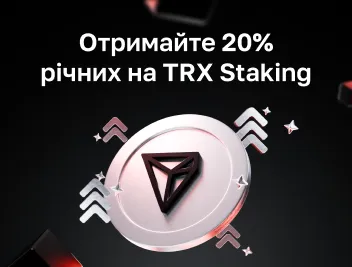
Дохідний Фармінг що це таке?
Інноваційне слово «крипто» продовжує дивувати членів спільноти. Не так давно з'явився новий спосіб отримати прибуток від своїх інвестицій, який отримав назву «дохідний фармінг». У цій статті ми дізнаємося, що таке дохідний фармінг, як воно працює та чи варто в нього інвестувати.
Що таке Дохідний Фармінг?
Дохідний фармінг — це система, в якій власники криптовалюти можуть вносити свої кошти в пул разом з іншими користувачами, щоб отримати прибутки від інвестицій. Сам процес зазвичай схожий на внесення грошей до банку, хоча основна відмінність полягає в тому, що в банківський системі ваші кошти заблоковані на певний період часу. Процес цього називається «стейкинг». Користувачі зазвичай отримують відсотки, позичаючи свою криптовалюту. Стратегія сама по собі дуже ризикована, але обіцяє своїм учасникам високі винагороди.
Потенційна винагорода пов’язана з великими ризиками, оскільки протоколи та монети надзвичайно мінливі. Ви також не повинні забувати про клопоти, коли розробники залишають проекти, а інвестори залишаються без винагороди.
Дохідний фармінг можна знайти через платформи DeFi або біржі криптовалют.
Тепер, коли ми знаємо, що таке дохідний фармінг, давайте поговоримо про те, як це працює.
Як працює Дохідний Фармінг?
Інвестор ставить свою криптовалюту через «протокол кредитування» через dApp. Тепер ліквідність є, і інші інвестори можуть позичити її для власних інвестицій.
Дохідний фармінг винагороджує ранніх інвесторів, і часто токени управління цього блокчейна будуть видаватися для збереження їх в якості користувачів і їх ліквідності в системі. Користувачам децентралізованої системи дозволено голосувати за будь-який новий законодавчий орган. Ці маркери управління, що надаються як винагорода за дохідний фармінг, важливі, оскільки вони лежать в основі будь-якого DAO або проекту, керованого користувачами. Екосистема підтримується завдяки пулам ліквідності, оскільки більша частина ранньої ліквідності надходить від менших проектів.
Хочете знати, як рацює дохідна ферма? Існує перелік кроків, які виконуються в процесі дохідного фармінгу:
- Дохідний фармінг починається зі створення пулу ліквідності, створення якого спирається на смарт-контракт, який полегшує всі інвестиції та запозичення для конкретної Дохідної ферми.
2.Інвестори вкладають свої кошти, підключаючи свої гаманці до пулу.
3.Смарт-контракт полегшує чимало процесів, зокрема додавання ліквідності для ринку обміну криптовалют або кредитування інших
4.За результатами учасники отримують відсотки, які можуть змінюватися в залежності від дохідності ферми. Встановіть регулярні проміжки часу або конкретні дати, коли ви хочете отримати виплату, і вимагайте винагороди на веб-сайті.
Типи Дохідного Фармінгу
Постачальник ліквідності: щоб забезпечити торгову ліквідність, користувачі депонують дві монети на біржах. Завдяки невеликій комісії, яку бере біржа для оплати постачальникам ліквідності за обмін двох токенів. Комісія іноді сплачується токенами ліквідності.
Кредитування: власники позичають криптовалюту позичальникам через смарт-контракт і отримують відсотки від позики.
Запозичення: є можливість використовувати один токен як заставу та отримати позику від іншого. Фермер зберігає свою частку, одночасно заробляючи прибуток на позиченій монеті.
Ставки: є дві форми ставок. Основний з них — блокчейни з підтвердженням частки: користувачеві виплачуються відсотки за те, щоб він передав свої токени в мережу. Це зроблено для забезпечення безпеки. Другий варіант полягає в тому, щоб зробити ставку на токени пулу ліквідності, отримані від надання ліквідності для бірж. Таким чином постачальник отримує врожайність вдвічі.
Які винагороди за Дохідний Фармінг?
Прибутковість починає свою історію в 2020 році, і власники могли похвалитися тризначними ставками APY, що є незвичним для користувачів, які не використовують криптовалюту. Однак ці ставки призводять до надзвичайної волатильності, тому ризики, безперечно, існують, і ми поглибимося в них пізніше.
У будь-якому випадку дохід залишається прибутковим, але це залежить від того, скільки грошей, часу та зусиль ви вкладете в це. Крім того, для максимальної ефективності потрібне глибоке знання платформ DeFi та інших продуктів.
Щоб отримати пасивний дохід, краще розмістіть свої кошти на надійній платформі, або в пулі ліквідності, щоб протестувати його та побачити, як воно. Розвинувши рівень впевненості, ви можете перейти до інших інвестицій.
Ризики Крипто Дохідного Фармінгу
Вища толерантність до ризику потрібна, якщо ви хочете працювати на суто спекулятивному ринку. Іншим фактором, який створює ризики, є те, що дохідний фармінг працює на децентралізованих біржах.
- Перетягнення Килимка
Перетягнення відбувається, коли розробники криптопроектів залишають свої проекти та ніколи не повертають інвестовані гроші попереднім користувачам. Дохідні Ферми піддаються великому ризику через характер проектів, у яких вони зазвичай беруть участь. - Помилки або хаки смарт-контракту
Якщо помилка виникає, фермери стають уразливими до злому та крадіжок. - Непостійна втрата
Теоретично інвестори можуть втратити більше, ніж вони інвестували, оскільки монета ферми все ще відповідає ринковій вартості цієї монети. - Волатильність
Криптоволатильність майже непередбачувана, вона може як різко зрости, так і різко впасти, поки ваші кошти заблоковані, і ви нічого не можете з цим вдіяти. - Регуляторний ризик
Ситуація з регулюванням криптовалют все ще залишається невизначеною, оскільки SEC звинувачує деякі активи в тому, що вони є цінними паперами, що ускладнює процес.
Чи варто займатися Дохідним Фармінгом?
Щоб успішно займатися дохідним фармінгом, важливо мати робочу стратегію та бути захопленим отриманням прибутку. Щоб отримати кращий досвід, варто дізнатись більше та перш за все шукати списки криптографії дохідного фармінгу, або найкращі криптоплатформи дохідного фармінгу. Вашою метою має бути досягнення найкращого фармінгу. Інший аспект, про який варто знати, це те, що це вигідно лише в тому випадку, якщо ви готові інвестувати значну суму грошей, інакше ваш дохід буде з’їдений зборами. Ідея заробити подвоєні або навіть потроєні суми може бути привабливою, однак, це не дуже гарна ідея, якщо ви не розумієте базових алгоритмів прибутку та не усвідомлюєте можливі ризики.
Плюси і мінуси Дохідного Фармінгу
Плюси
- Можливість заробити високі відсотки: є можливість заробити понад 100% APY.
- На основі смарт-контрактів: коли ви використовуєте смарт-контракти, немає необхідності в участі посередника. Транзакція можлива, якщо в учасника є лише сумісний гаманець.
- Частина системи DeFi: можливість стати частиною інноваційної системи DeFi.
мінуси
- Ризик непостійних втрат: якщо ціна заблокованої криптовалюти знизиться, ваші втрати будуть непостійними.
- Шахрайство та злом: це може бути ризиковано, як і для будь-якої частини екосистеми криптовалюти.
- Проблеми податкової звітності: Дохідний фармінг лише ускладнює управління крипто-транзакціями.
Як розпочати Дохідний Фармінг
Ось кроки, щоб самостійно взяти участь у Дохідному фармінгу:
- Дослідіть інвестиції в продуктивні ферми: по-перше, дослідіть потенційні інвестиції в продуктивні ферми – на вибір є купа платформ для дохідного фармінгу.
- Підключіть свій гаманець або поповніть рахунок: щоб взяти участь у дохідному фармінгу, переконайтеся, що ваш гаманець сумісний.
- Поставте свою криптовалюту: поставте свої кошти та заблокуйте їх на певний час.
- Збирайте свої прибутки: процес отримання винагороди залежить від вибраної ферми.
Заключні думки
Це досить ризикована діяльність, щоб отримати криптовалюту, оскільки це передбачає блокування ваших криптоактивів, щоб отримати з цього відсотки. Ваш успіх у дохідному фармінгу здебільшого залежить від вашої терпимості до ризику. Найбільше від цього отримують і найменше втрачають ті, хто найбільш уважний до своїх коштів.
Оцініть статтю








коментарі
0
Ви повинні увійти, щоб залишити коментар